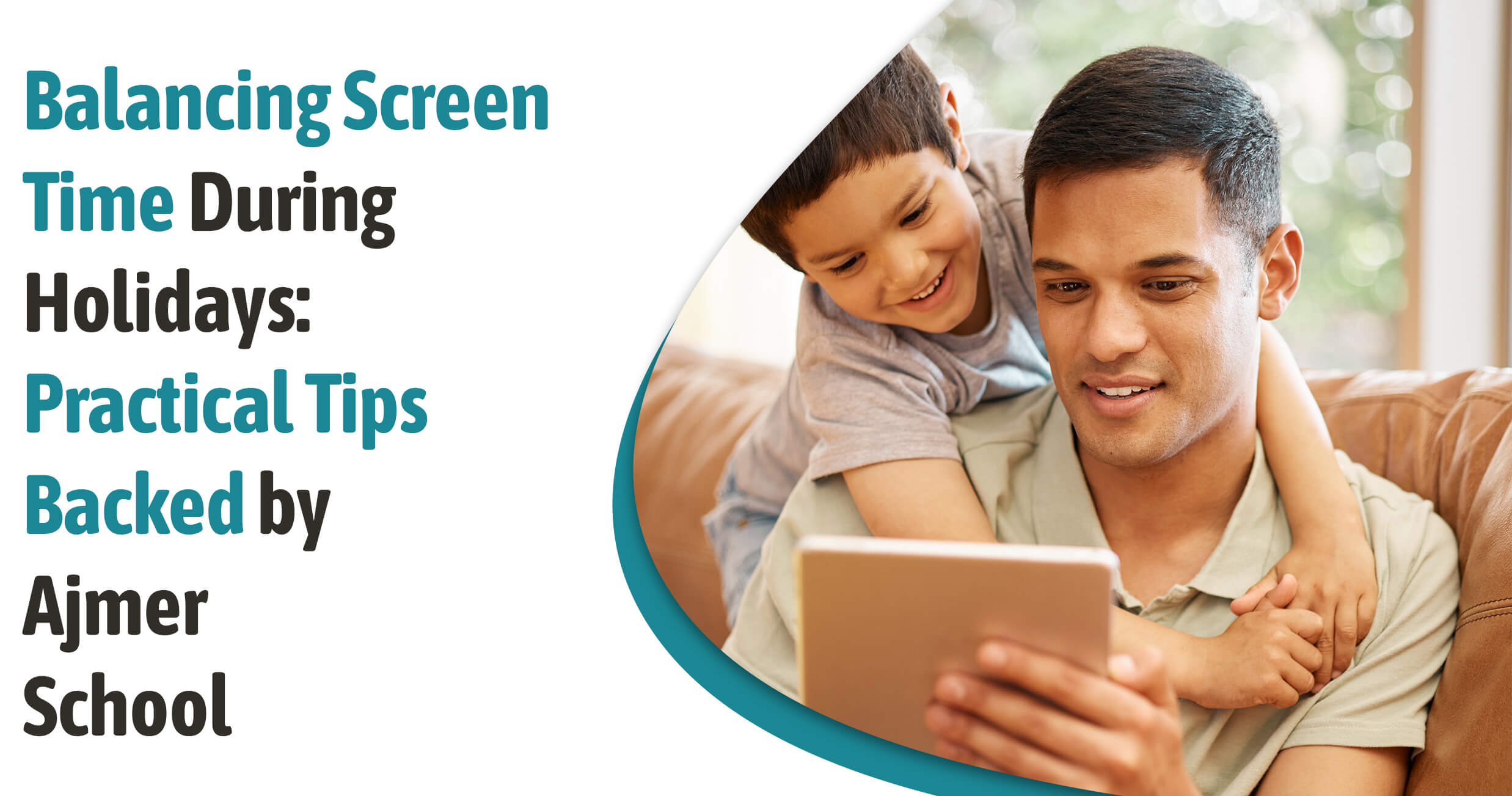
The holidays are almost here, and if you’re anything like most mums and dads we speak to, you’re probably already wondering how to keep your children engaged without letting them spend all day glued to a screen.
To be honest, we’ve all handed over a phone or tablet just to buy a few minutes of peace. No judgment, all parents have been there. But when those few minutes turn into hours, it’s easy to feel that familiar pang of guilt.
So, what’s the solution? How do we find that sweet spot between relaxation and overstimulation?
Here at SIS, Ajmer, we’ve been working closely with families to explore healthier digital habits, and we’re excited to share some practical, parent-tested tips to help you manage screen time more mindfully this holiday season.
How many hours of screen time do you think your child gets on a typical holiday day?
Is it 2 hours? 4? Maybe more?
You’re not alone. In fact, our recent survey with parents in Ajmer revealed that 70% of families feel their child’s screen time “dramatically increases” during school breaks. Most of them said they weren’t quite sure how to reduce it, without triggering a full-blown meltdown.
Let’s break this down together.
Children respond well to routine—even during holidays. Sit down as a family and set screen time boundaries together. This might look like:
Let your child be part of this decision-making process. When children feel included, they’re far more likely to cooperate.
Ask yourself: Have I had this conversation with my child, or have I just imposed the rules? A small shift in approach can make a world of difference.
Not all screen time is created equal. Watching random YouTube videos for hours is very different from coding a game, making digital art, or attending an online storytelling session.
Encourage active engagement. Ask your child:
You might be surprised at what they’re actually gaining from it—and it opens a door for better communication.
Yes, this works! Many Ajmer parents have told us they use this simple trick with great success.
Here’s how:
Let your child take the lead in building the list, it makes them more likely to follow through.
This one’s tough but crucial. Children mirror our actions more than our words.
Take a moment to reflect:
This isn’t about blame, it’s about awareness. Small changes in our own habits can create a ripple effect.
Think of it as a mini digital detox—but make it fun.
Choose one hour each day where everyone (yes, parents too!) switches off all screens. Use that time for something meaningful:
The key here is togetherness. When children see the whole family participating, it no longer feels like a punishment, it feels like quality time.
You might say, “Let’s make 6–7 pm our unplugged hour—just us, no phones.” And stick to it. Over time, this small daily habit can become a treasured ritual.
Ask yourself: When was the last time we spent an hour together with no interruptions?
Even one screen-free hour can make your child feel more connected—and that’s often what they need most.
We’re not suggesting that screens are evil. In fact, many apps and platforms are brilliant for learning, creativity, and even relaxation. But the key is balance.
Holidays are a time for family, fun, and recharging, not for battles over tablets. By involving your children in setting realistic expectations and leading by example, you’re not just reducing screen time but you’re teaching life skills.